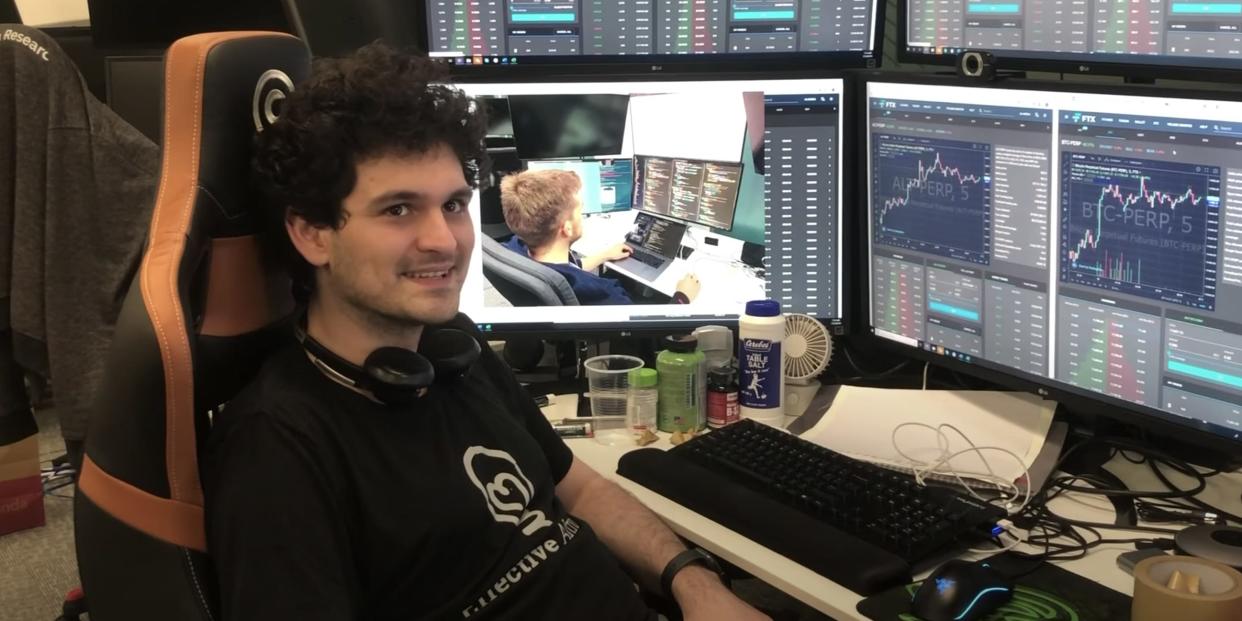Sam Bankman-Fried dismissed ex-staffers' ideas for more rigorous risk controls at Alameda Research, years before its collapse: report

Sam Bankman-Fried dismissed employees' ideas for more rigorous internal controls, WSJ reported.
A group of employees left Alameda Research in 2018 amid concerns over Bankman-Fried's cavalier leadership style, per the report.
Bankman-Fried told the Journal that employees left the firm due to personal disputes and their lack of productivity.
Former employees of Alameda Research had concerns early on about Sam Bankman-Fried's cavalier leadership style and say that he dismissed their ideas for setting up more internal safeguards, according to a Wednesday Wall Street Journal report.
Before founding Alameda, Bankman-Fried had worked at Jane Street Capital, a tightly controlled quantitative trading firm. However, ex-staffers told the Journal that he failed to bring the same level of internal controls to his own company, and shrugged off proposals for setting up more rigorous systems for compliance and accounting.
"He didn't want to feel constrained," Naia Bouscal, a former Alameda software engineer, told the Journal. "But as a result we ended up not really knowing how much money we even had."
A group of employees left Alameda in April 2018 after sharing their concerns about Bankman-Fried to investors and interested parties, though they never told regulators. At one point, they offered Bankman-Fried a $1 million buyout, which he turned down.
"We looked at Sam and his actions, his decisions, the way he treated people and the way he ran the company and came to the conclusion he's not a person we wanted to be in business with or associate with," Bouscal said.
Bankman-Fried, for his part, told the Journal that those staffers left the company due to personal disputes and a lack of productivity, and that his company did address their concerns over trading risks.
Sources familiar told the Journal that Bankman-Fried believed extensive risk controls would limit activity and slow down the speed with which Alameda could place trades.
The firm built a trading algorithm that could make fast, automated trades, though the Journal reports that staffers were worried Alameda couldn't track all of those moves, and that it needed to track gains and losses more closely. That idea, too, Bankman-Fried rejected.
In 2018 documents viewed by the Journal, Bankman-Fried does acknowledge Alameda's shortfalls, and how they led to trading losses.
"No one was ultimately making sure that our trading and accounting were OK," Bankman-Fried wrote. "We did a lot of sloppy trades, many of which some people were at the time worried about."
Those documents add that Alameda built up a more robust accounting system in March 2018, which led to more trading gains.
Alameda and FTX collapsed this month, with the exchange filing for chapter 11 and Bankman-Fried stepping down as CEO.
John J. Ray III, the new CEO of FTX Group, wrote in a court filing that he had never seen "such a complete failure of corporate controls," even in his time cleaning up failed energy firm, Enron.
Read the original article on Business Insider

